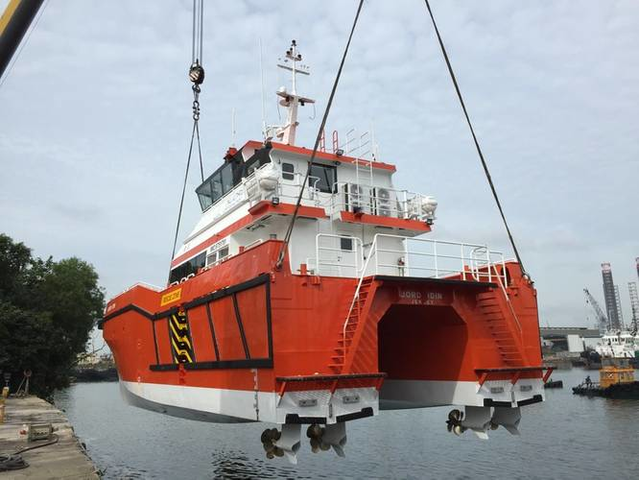DLBA UNIVERSITY
Multiple POD units for efficient vessel handling in wind farm operations
NOVEMBER 27, 2019
By G Torneman, AB Volvo Penta, Sweden
For wind farm workboat operations, various designs of vessels and propulsion system are used for different kind of missions, such as crew transfer, material transport, fuelling, survey and security handling. Vessels can be of SWATH design, catamaran design with symmetrical or asymmetrical hulls, mono hulls and trimarans. Propulsion systems used today are waterjet propulsion system (WJ), Controllable Pitch Propeller systems (CPP), Fixed Pitch Propellers (FPP) and Podded system (IPS). This paper will mainly cover the use of podded systems in comparison to WJ systems and FPP in catamaran applications. It’s based on discussions with wind farm service providers and skippers as well as Volvo Pentas own experience in the field. Any statements should be seen as opinions solely from the author, but could sometime be based on real case studies.
In case you would like to receive more information or discuss about this subject, please contact Jeffrey Bowles.

Summary
Volvo Penta IPS propulsion systems with forward facing contra rotating propellers have proven themself to be very successful in WFSV Wind Farm Support Vessels in the 16-19 m range. The high fuel efficiency during high speed transfer from shore to offshore site, the manoeuvrability advantages with active rudders and the high zero speed thrust with controlled exhaust temperatures has helped the operators and the vessels helmsmen to fulfil their missions of transferring crew, technicians, service engineers and fuel out to the wind farm locations in the roughest weather conditions. Now, when the operators are designing and building vessels for the new fields with much longer distances to go from nearest harbour, the multi-engine lay out with 4 engines has been recognized as one of the best concept to ensure high redundancy for the vessel operations and minimize the risk of costly down times for the wind farm operators. With Volvo Penta Quadruple IPS installation all the features of the IPS system, including active manoeuvring in high seas, no risk of losing grip in water in bollard push against the wind farm pylon and reduced fuel consumption compared with fixed pitch propellers and waterjets, are available for the 24-30 m range of WFSV. The paper will show the calculations of speed and thrust for different vessels type as well as different lay-outs of the IPS system in a multiple engine application. Experience from WFSV operation with Volvo Pentas engines and prop system will also be presented with load factors and experience from real duties.
REFERENCES
Photos of NOS Northern Offshore Services are taken from www.n-o-s.eu
Photos of WINDCAT workboats are taken from www.windcatworkboats.com
Share this article online:
HOW CAN WE HELP YOU?
FEEL FREE TO CONTACT US

DLBA Naval Architects
860 Greenbrier Circle, Suite 201 Chesapeake, Virginia 23320 USA
Phone: 757-545-3700 | Fax: 757-545-8227 | dlba@gibbscox.com
STAY UPDATED
SIGN UP FOR OUR NEWSLETTER
Keep your finger on the pulse of the latest points of focus in naval architecture and engineering: subscribe to DLBA’s concise monthly newsletter. Within it, we briefly describe and picture our latest projects and concepts. We encourage feedback and seek to have our newsletter spark conversation regarding potential collaborations and further advancements as we share our passion for the industry.
